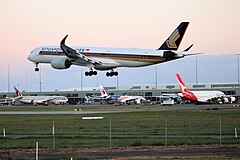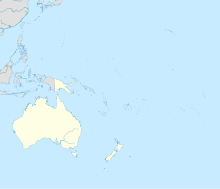Qantas Airways Limited, or simply Qantas, is the flag carrier of Australia, and the largest airline by fleet size, international flights, and international destinations in Australia and Oceania. A founding member of the Oneworld airline alliance, it is the only airline in the world that flies to all seven continents, with it operating flights to Africa, Antarctica, Asia, Europe, North America and South America from its hubs in Sydney, Perth, Melbourne and Brisbane. It also flies to over 60 domestic destinations across Australia.
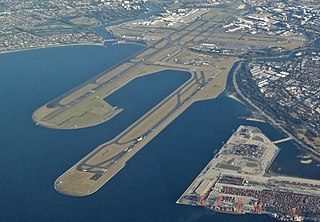
Sydney Kingsford Smith Airport — colloquially Mascot Airport, Kingsford Smith Airport, or Sydney Airport — is an international airport serving Sydney, New South Wales, Australia, 8 km (5.0 mi) south of the Sydney central business district, in the suburb of Mascot. Sydney Airport is the busiest airport in Oceania. It is the primary airport serving Sydney and is a primary hub for Qantas, as well as a secondary hub for Virgin Australia and Jetstar.

Melbourne Airport, known locally as Tullamarine Airport, is the main international airport serving the city of Melbourne, the capital of the Australian state of Victoria. It has Australia's second largest passenger traffic. The airport operates 24/7 and has on-site parking, shopping and dining. The airport opened in 1970 and replaced Essendon Airport. Melbourne Airport is the main international airport of the four airports serving the Melbourne metropolitan area, the other international airport being Avalon Airport.

Ansett Australia, originally Ansett Airways, was a major Australian airline group based in Melbourne, Victoria. The company operated domestically within Australia, and from the 1990s, to destinations in Asia. Following 65 years of operation, the airline went into administration in 2001 following a financial collapse and subsequent liquidation in 2002, subject to a deed of company arrangement. Ansett’s last flight touched down on 5 March 2002.

Perth Airport is an international, domestic and general aviation airport serving Perth, the capital city of Western Australia.

Brisbane Airport is an international airport serving Brisbane, the capital of the Australian state of Queensland. The airport services 31 airlines flying to 50 domestic and 29 international destinations, total amounting to more than 22.7 million passengers who travelled through the airport in 2016. In 2016, an OAG report named Brisbane airport as the fifth-best performing large-sized airport in the world for on-time performance with 87% of arrivals and departures occurring within 15 minutes of their scheduled times, slipping from 88.31% the year before. It covers an area of 2,700 hectares, making the airport the largest in land area in all of Australia.
Jetstar Airways Pty Ltd, trading as Jetstar, is an Australian low-cost airline headquartered in Melbourne, Victoria. It is a wholly owned subsidiary of Qantas, created in response to the threat posed by the airline Virgin Blue. Jetstar is part of Qantas' two-brand strategy of having Qantas Airways for the premium full-service market and Jetstar for the low-cost market. As of June 2015, Jetstar was carrying 8.5% of all passengers travelling in and out of Australia.
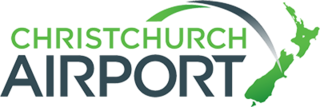
Christchurch Airport is an international airport serving Christchurch, New Zealand. It is located 12 km (7.5 mi) to the northwest of the city centre, in the suburb of Harewood. Christchurch (Harewood) Airport officially opened on 18 May 1940 and became New Zealand's first international airport on 16 December 1950. It is the second busiest airport in New Zealand, after Auckland and before Wellington by annual passengers, and the second busiest, after Auckland, by aircraft movements.

Gold Coast Airport is a domestic and international Australian airport located at the southern end of the Gold Coast and approximately 90 km (56 mi) south of Brisbane, within the South East Queensland agglomeration. The entrance to the airport is situated in the suburb of Bilinga near Coolangatta. The main runway itself cuts through the state borders of Queensland and New South Wales. During summer, these states are in two different time zones. The Gold Coast Airport operates on Queensland Time.

Hobart Airport is an airport located in Cambridge, 17 km (11 mi) north-east of the Hobart central business district. It is the principal airport of Tasmania.

Launceston Airport is a regional airport on the outskirts of Launceston, Tasmania. The airport is located in the industrial area of Western Junction, 15 kilometres from Launceston city centre. It is Tasmania's second busiest after Hobart.

Canberra Airport is an international airport situated in the district of Majura, Australian Capital Territory. It serves Australia's capital city, Canberra, as well as the nearby city of Queanbeyan and regional areas of the Australian Capital Territory and southeastern New South Wales. Located approximately 8 km (5.0 mi) from the city centre, within the North Canberra district, it is the ninth-busiest airport in Australia.

Wellington International Airport — formerly known as Rongotai Aerodrome or Rongotai Airport, or simply Wellington Airport — is an international airport located in the suburb of Rongotai in Wellington, the capital of New Zealand. It lies 5.5 km south-east from the city centre. It is a hub for Air New Zealand and Sounds Air. Wellington International Airport Limited, a joint venture between Infratil and the Wellington City Council, operates the airport. Wellington is the third busiest airport in New Zealand after Auckland and Christchurch, handling a total of 3,455,858 passengers in the year ending June 2022, and the third busiest in terms of aircraft movements. The airport, in addition to linking many New Zealand destinations with national and regional carriers, also has links to major cities in eastern Australia. It is the home of some smaller general aviation businesses, including the Wellington Aero Club, which operates from the general aviation area on the western side of the runway.
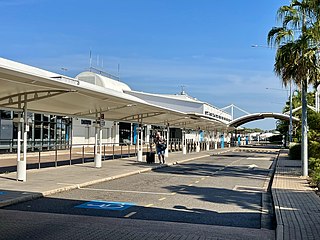
Darwin International Airport is a domestic and international airport, and the only airport serving Darwin, Australia. It is the eleventh busiest airport in Australia measured by passenger movements.
QantasLink is a full-service, regional brand of Australian flag carrier Qantas and is an affiliate member of the Oneworld airline alliance. As of 2024, QantasLink provides over 2,000 flights each week to 65 metropolitan, regional and remote destinations across Australia, as well as short-haul international services to Singapore, the Solomon Islands, New Caledonia and East Timor. Flights are operated by the Qantas owned subsidiaries of Eastern Australia Airlines, National Jet Systems, Network Aviation and Sunstate Airlines, with E190s wet-leased from Alliance Airlines.

Townsville Airport is a major Australian regional airport that services the city of Townsville, Queensland. The airport is also known as Townsville International Airport, and Garbutt Airport, a reference to its location in the Townsville suburb of Garbutt. Townsville Airport is serviced by major Australian domestic and regional airlines, and in 2011/12 handled 1.7 million passengers making it the 11th busiest airport in Australia.

Newcastle Airport, also known as Williamtown Airport, is an international airport in Williamtown, New South Wales. It is located 15 kilometres; 9.2 miles (8 NM) north of Newcastle in Port Stephens. It is the 13th busiest airport in Australia, handling over 1.25 million passengers in the year ended 30 June 2017, an increase of 6.6% on the previous year. The airport occupies a 28 ha (69-acre) site on the southern border of RAAF Base Williamtown.
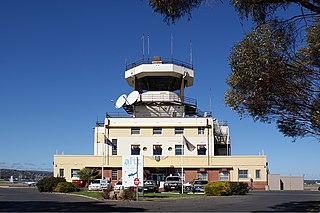
Parafield Airport is on the edge of the residential suburb of Parafield, South Australia, 18 km (11 mi) north of the Adelaide city centre and adjacent to the Mawson Lakes campus of the University of South Australia. It is Adelaide's second airport and the third busiest airport in Australia by aircraft movements. Although owned by the Government of Australia, the airport is leased to and managed independently by Parafield Airport Ltd., a wholly owned subsidiary of Adelaide Airport Limited.

Aviation in Australia began in 1920 with the formation of Qantas, which became the flag carrier of Australia. The Australian National Airways (ANA) was the predominant domestic carrier from the mid-1930s to the early 1950s. After World War II, Qantas was nationalised and its domestic operations were transferred to Trans Australia Airlines (TAA) in 1946. The Two Airlines Policy was formally established in 1952 to ensure the viability of both airlines. However, ANA's leadership was quickly eroded by TAA, and it was acquired by Ansett Transport Industries in 1957. The duopoly continued for the next four decades. In the mid-1990s TAA was merged with Qantas and later privatised. Ansett collapsed in September 2001. In the following years, Virgin Australia became a challenger to Qantas. Both companies launched low-cost subsidiaries Jetstar and Tigerair Australia, respectively.

